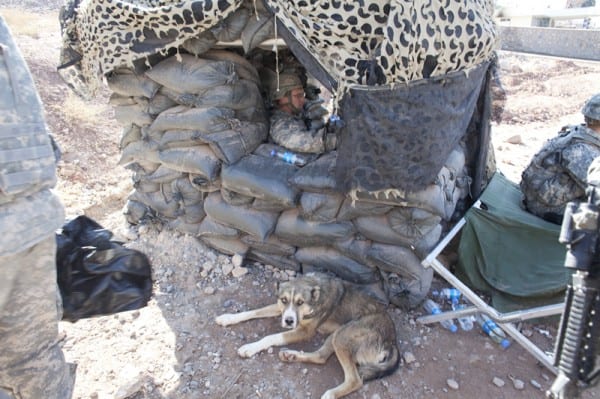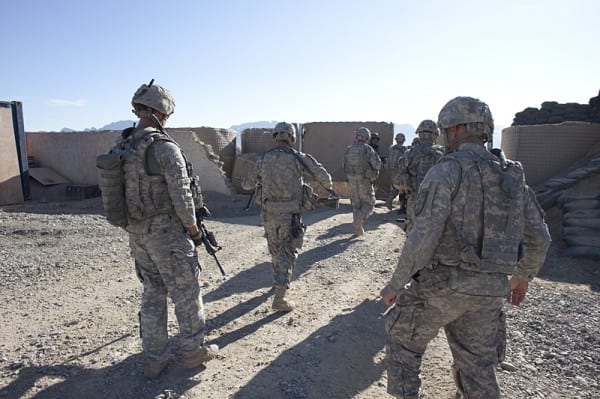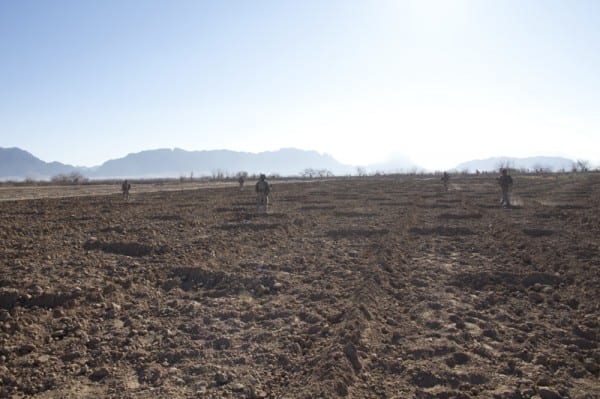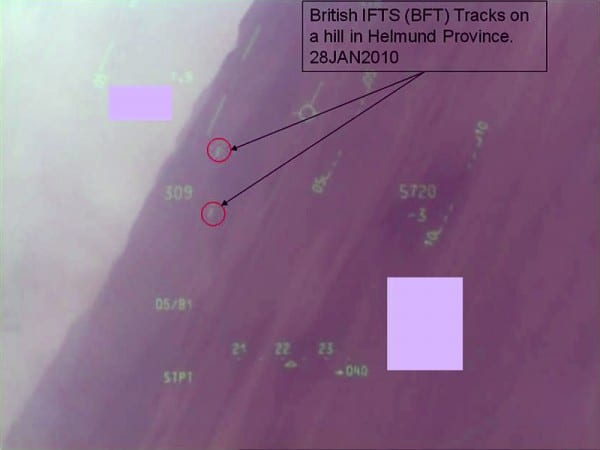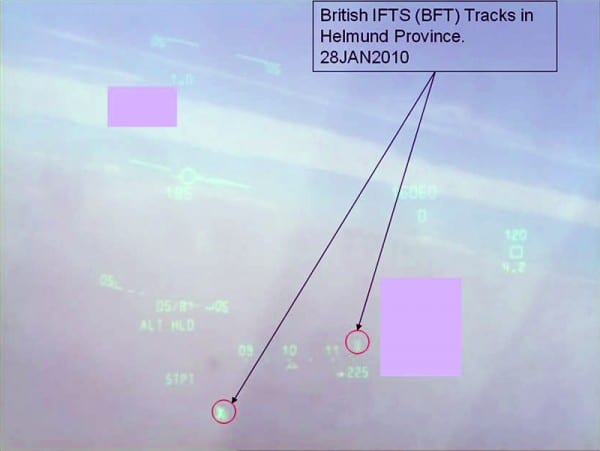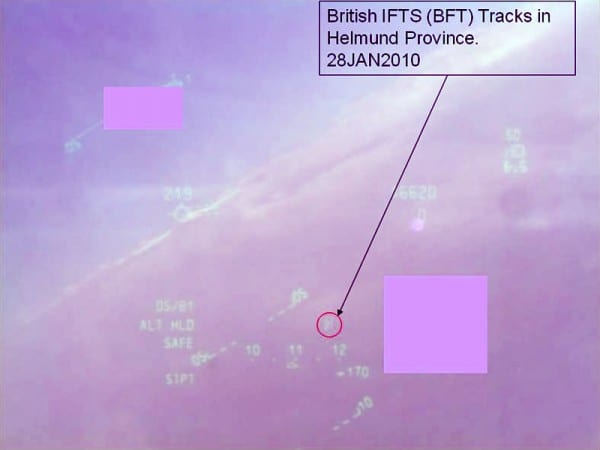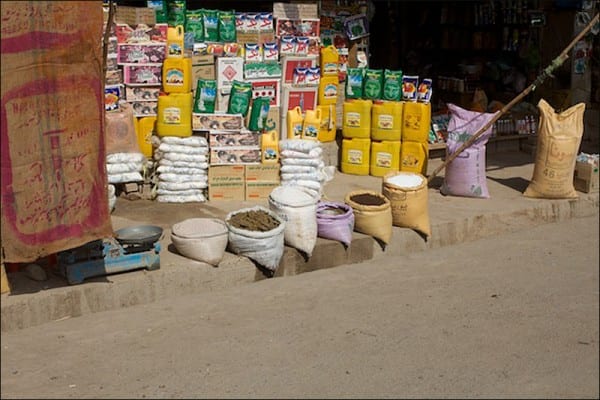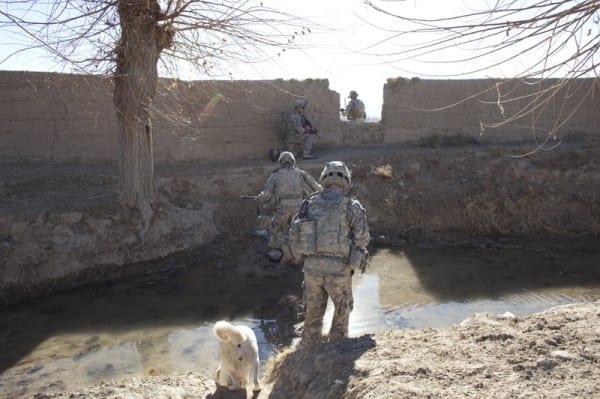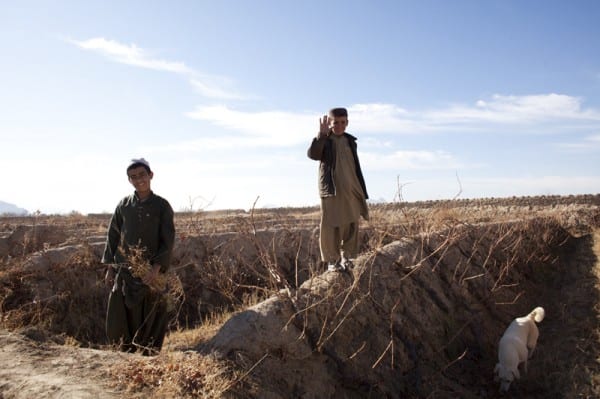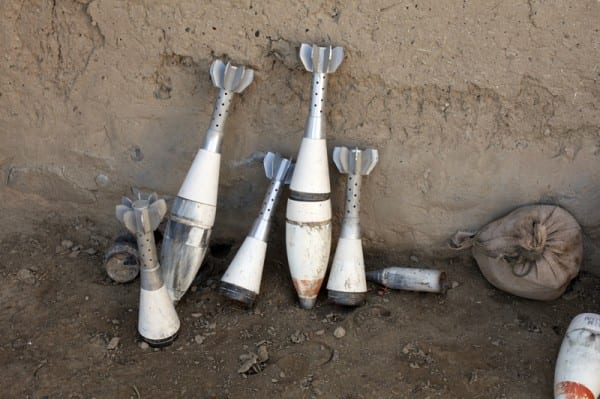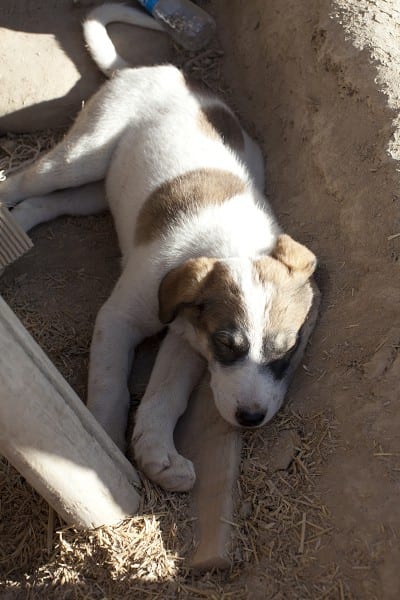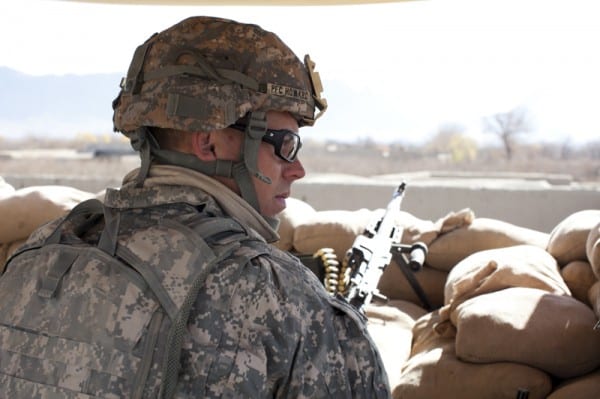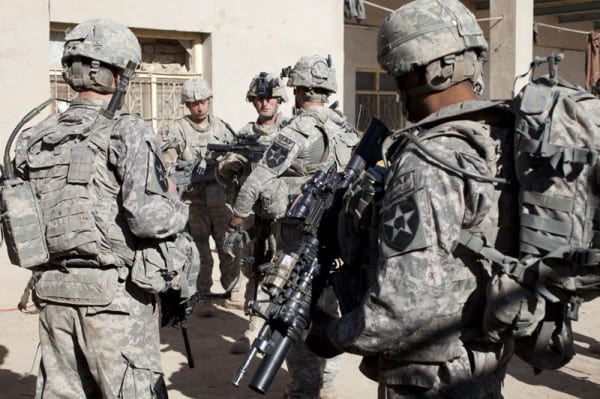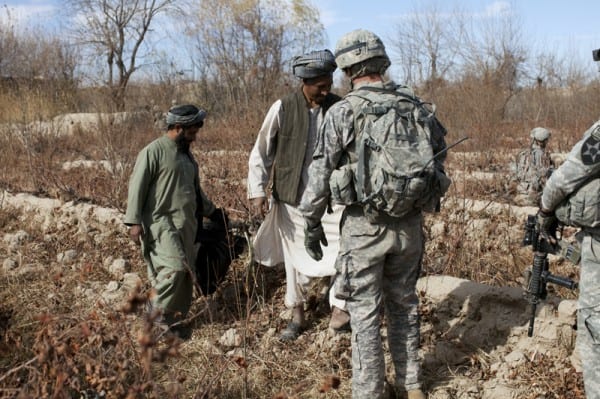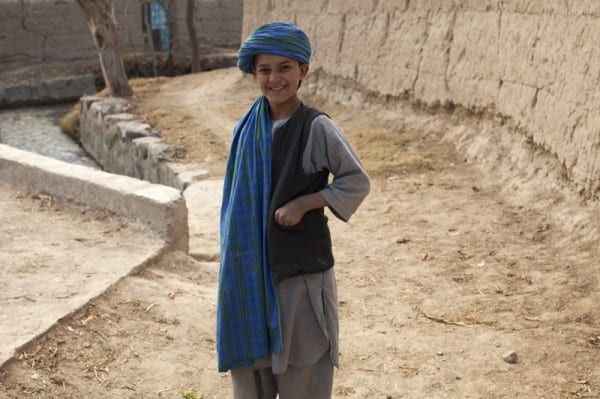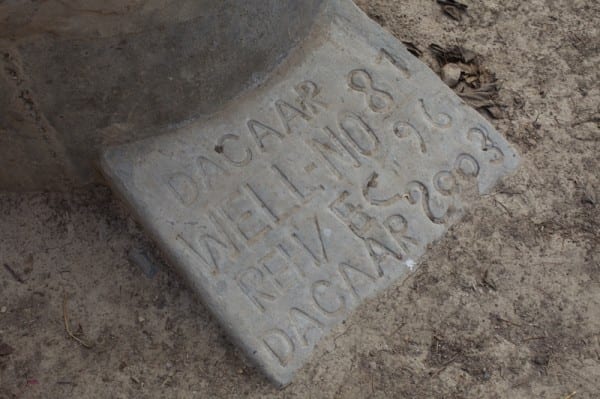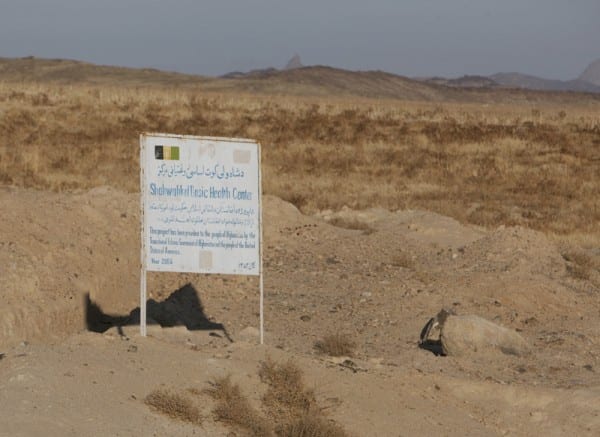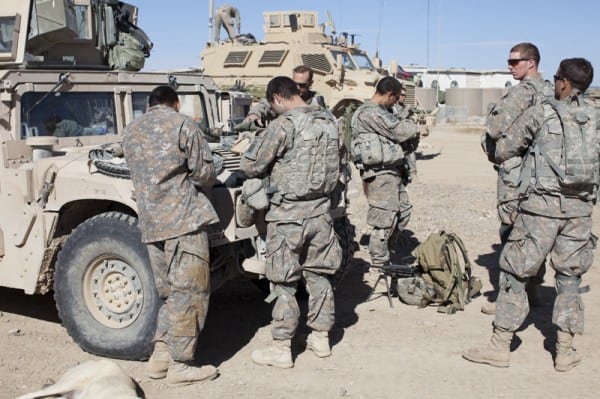TRACING HUMAN HISTORY through hair.
Archive for 2010
February 13, 2010
TIGERHAWK ON THE LATEST GUILT-BY-ASSOCIATION PLOY:
TPM: “Man Charged With Stockpiling Weapons Was Tea Partier, Palin Fan.” Yeah, well, Jeremiah Wright and Bill Ayers are “Democrats, Obama fans”, but that wasn’t a problem, was it?
No, to stress their associations would be racist, or McCarthyist, or something. Plus, be sure to ignore those murderous socialists.
REMINDER: Barack Obama and the Parallel to Jimmy Carter. Prescient.
MATT WELCH: Hey Libertarians! Liberals Are Just Not That Into You! They never were, they just hoped the deception would hold for an election cycle or two.
BEES ARE FIENDS FOR caffeine and nicotine.
FORD ATTEMPTS TO make natural gas vehicles relevant.
THE BEST non-essential kitchen tools.
MICHAEL YON SENDS THIS DISPATCH TO INSTAPUNDIT READERS. I don’t usually run things this long on InstaPundit, but although domestic politics have eclipsed war coverage in a lot of places, what’s going on in Afghanistan is still important, and Michael is providing the best coverage out there. Note that he’s supported by reader donations, so if you like his work, hit his tipjar. He needs more support if he is to go back.
Patterns
Arghandab, Afghanistan
Written 19 December 2009
Published 13 February 2010 (Instapundit)
This is a story of warfighting and technology, and what life is like on the ground for our troops, as they do their best in war.
Last night a soldier from the 82nd Airborne Division was killed. The attack occurred just hours before the 82nd was to relieve 1-17th Infantry from duties in portions of the Arghandab River Valley near Kandahar.
Earlier that morning, soldiers from 1st Platoon, B-company (1-17th) had taken me on a short, easy mission out to a micro-base called “Brick 1.” The Platoon leader was 1st Lieutenant Ryan Fadden, while SFC Dimico was the platoon sergeant. The platoon was ready. Despite the filthy environment, weapons were clean, the gear was sorted and the men were in good spirits and a businesslike frame of mind. They seemed confident. It looked like Lieutenant Fadden and SFC Dimico were on their jobs. The battalion had lost 21 men KIA during the first several months of combat—the Brigade lost 31. An article was about to be published in the Army Times which might lead one to believe that the 1-17th is not combat-ready. The author, Sean Naylor, is as highly respected as he is experienced, and so his words are taken seriously. Yet during my first week, despite serious stresses in some places, the men seemed ready.
And so 1st Platoon drove in their Strykers from COP Jelawur, stopping a couple kilometers away from a small ANA (Afghan National Army) base just on the edge of the Green Zone of the Arghandab River near Kandahar. The heavy Stryker ramps hissed and dropped with a dull thump. The soldiers piled from the backs of the four machines. Two white dogs with wagging tails greeted the men, and the men greeted the dogs as if they were old buddies.
Chaplain Gary Lewis said a prayer, then 1st Platoon left the Gate heading to “Brick 1”
The soldiers checked weapons yet again and adjusted gear, and we walked out the gate, keeping intervals so that a single bomb couldn’t get many of us at once. Sometimes enemies “daisy chain” bombs together like a trotline, killing or wounding many soldiers simultaneously.
The morning was cool, bright and dry, and so the fine dust left perfect boot prints. This was to be the final mission for 1st Platoon in the area before the 82nd Airborne would take over responsibilities at around midnight.
As we walked out the gate, the older female dog which, by her looks, apparently had nursed dozens of suckling puppies in her years, decided to stay behind. The younger white dog trotted out the gate with us.
We walked on the road for a short distance under the direct view of a machine gunner on the perimeter. The roads, trails, and any places that are easy to walk are dangerous. Some bombs have been planted for months and the rains and winds have erased visible signs. The enemy will fire rifles or machine guns, trying to use American aggressiveness against our troops by luring young leaders into traps. The enemy has frequently succeeded in planting bombs very close to American and British bases, and so the minute you step out that gate, watch out. Some of the most dangerous places are closest to the bases where movements are most predictable. In Sangin, a guy tried to plant a bomb in clear view of a British guard tower, so close that the sentry could have killed him with a bow and arrow. Some people believe the Taliban are cowards, but in fact they are audacious and brave.
We moved off the road and patrolled across a freshly ploughed field of rich brown soil, soft as cotton. A shovel lay in the field. The brown boots of soldiers ahead raised dust puffs that caught in the gentle breeze. To attempt to mimic steps of the soldier ahead would glue eyes to ground, away from potential firing points. And besides, the bombs often kill someone far back in the patrol, even in places where others clearly have stepped. British and American soldiers have seen men killed after others had walked directly on a bomb maybe twenty times, until finally a friend disappears on what seemed safe ground. The enemy plants bombs at obvious choke points, but also in random places such as the middle of fields. Planting bombs in covered places drives us into the open, making it easier to ambush with rifles and machine guns. In war, this is fair play.
No matter how hard soldiers try to vary their routes, patterns are set that transcend particular units. The 5/2 SBCT is using an interesting method to avoid making patterns called the “Honesty Trace.”
Our vehicles carry various tracking gear, one of which is the “BFT,” or Blue Forces Tracker. We are the Blue Forces. A “blue on blue” incident usually means we accidentally attacked our own people or allies, which we try hard to avoid. The BFT has many functions, but the prime function is to track the friendly vehicles, representing each with a circular blue icon on the screens.
Soldiers in 5/2 also use something called “Land Warrior,” which includes a small backpack with GPS, radio and soldier-worn computer, similar to a BlackBerry but not as sophisticated. The entire system with batteries weighs about nine pounds. The Land Warrior (LW) is potentially an incredible system, but it “breaks a lot,” according to one soldier. Major Doug Copeland, the Assistant Product Manager for Land Warrior, said we have over 800 LW systems in the field, which have experienced a 3% component failure rate during about seven months of combat. Soldiers report the systems are not yet fully waterproofed, and they’re too heavy for comfort. (Infantrymen think in terms of bullets, and nine pounds equals about 270 bullets.) As the system matures, it should greatly increase our effectiveness.
An eyepiece fits on the helmet with a tiny computer screen that replicates a 17” monitor. The soldier uses the display when he needs to view friendly and enemy forces, which can be populated by the user, HQ, or other units. In other words, a Predator or helicopter could spot and report enemy forces and those enemy forces would appear on the “common operating picture.” The user can navigate, and send/receive digital orders and messages. Importantly, the user can send/receive graphics and images. Images are important. I recall a case in Mosul, Iraq in which a key figure was detained and released even though a soldier thought he recognized the man. Had the soldier been able to quickly send an image to HQ, the terrorist would have been arrested. Instead, he was released.
When viewing the display, the soldier wearing Land Warrior looks like a cyborg. The eyepiece displays his exact location, and that of other Land Warrior equipped soldiers and vehicles, including Strykers. Lieutenant Ryan Fadden, leading the patrol, keeps all the previous IED strikes programmed into his Land Warrior, and so he can see the exact location on the screen, and HQ can see the precise location of each Land Warrior-equipped soldier, as can our A-10C and F-16B30 pilots, though most aircraft cannot see the Land Warrior or BFT.
The Land Warrior and BFT can be coupled with current, already-installed communications systems. This is largely the baby of Captain Jared Cox, who as a lieutenant made a connection that aircraft should be able to track the BFT and Land Warrior. Captain Cox had been the unfortunate victim of a U.S. airstrike during a training mission at home. An American jet destroyed the car that he and an NCO were driving in. It’s a wonder they survived with only scratches. Captain Cox and some A-10C pilots answered my questions about this new system. I wondered how Captain Cox, as a young lieutenant, got enough leash to run with such a wild idea without the Pentagon first spending millions on a feasibility study. His answer was simple: Colonel Harry Tunnell, the Brigade Commander at 5/2 SBCT, thought he was on to something, and so let him try, but with specified goals and conditions. Result: we are using it in combat right here, right now.
Why is this important? Many reasons. We frequently use airpower to help level the extreme terrain advantages the enemy enjoys. In addition to trying to avoid civilian casualties, we try to avoid blue on blue, which, despite precautions, still occur. For instance, a British unit that I was with in Helmand was aggressively pursuing the enemy during a firefight. The British soldiers had located the enemy and pinned them, and were assaulting in. Meanwhile, an Apache helicopter strike was called. During the interim minutes, the ground forces had closed on the enemy, and they had gotten so close so quickly that the pilot thought they were the enemy. The British Apache wounded British soldiers while the enemy got away.
Below are the first unclassified images, released to me by the Air Force and Army, of this system at work in combat.
American A-10C spots British vehicles that were not seen by naked eye. In fact, the British probably do not realize that our A-10Cs have spotted them using the British BFT. Result: the British ground commander can bring our A-10C aircraft to bear with less delay.
Again, through the haze and difficulty, British vehicles can be spotted, allowing for faster, safer airstrikes when British call in American aircraft. It’s important to note that the British don’t have to invest a dime. Most British and American forces don’t know about this emerging capability—just make sure to keep your BFT on and the A-10C and F-16B30 can see you. Apaches and other aircraft cannot as of this writing. When soldiers are dismounted and using the Land Warrior (LW) system, the LW can relay through the vehicles to the A-10C/F-16B30, so the pilots can also see our dismounts, and the vehicles, on their HUDs (Heads Up Displays).
In Afghanistan, we continue to have “DUSTWUN” calls. DUSTWUN means Duty Status Whereabouts Unknown. These have happened especially near rivers, and in the mountains. We lose soldiers, especially after bombings. If the soldier was wearing a LW, we would either know his location, or his last known location. The LW also has a “call for medic” feature. The soldier can push a button that reports location and need for a medic. If he or she is good to type or talk, details can be transmitted.
American A-10Cs and F-16B30s can now track many vehicles from Australia, Canada, Czech Republic, Italy, New Zealand, Poland, Romania, Spain, United Kingdom and the United States.
An A-10C commander told me about an instance where American forces had called him in. The man on the ground insisted they were at point “A,” but the A-10C had picked up his LW, and said, “No, that’s not where you are,” and they quickly figured it out and kept working.
Between data from BFT and LW, headquarters can track just about every step soldiers take, and they can see stigmergic “ant patterns” develop. And so the Army hired a civilian expert who creates a pattern analysis to work at 5/2 HQ, and his reports warn unit leaders when they are setting patterns. This applies over time.
Just because 1st Platoon didn’t repeat a certain route doesn’t mean 2nd Platoon or 4th Platoon didn’t already set that same route. A unit that was there two years ago will have already created a pattern, and if the enemy paid attention—this enemy pays very close attention—they don’t need to wait until we draw a map with our boots. The enemy will predict how we move based on previous units. (Emergent patterns transcend particular persons or units.)
Explosives for sale in market in Sangin, Helmand. Ammonium nitrate is used as fertilizer but was recently outlawed in Afghanistan. Ammonium nitrate was used in the Oklahoma City bombing that killed 168 people.
The enemy sets patterns. The primary indicator that an IED is present is that an IED was there before. In this war, lightning strikes the same places repeatedly. Explosives are cheap. To avoid bombs, instead of going through doors, soldiers blast holes. They avoid paths, avoid bridges that are not observed, avoid the obvious. Some choke points are unavoidable, and so often the best course of action is to spend extra effort on nearby families, trying to develop relationships so they will give tips. By far, the number one counter-IED strategy is cultivating local people. If the local people don’t want you to get blown up, there is a strong chance you won’t get blown up, so long as they feel safe in passing the information. We saw this landslide of support occur in Anbar Province, Iraq, in late 2006, then spread through much of Iraq during 2007. As we pushed more troops into neighborhoods and lived with the people, the people flooded us with information.
There were farmers and kids in the immediate area.
This morning, we crossed the first field, and an irrigation canal. “White Dog” stepped daintily stepped across the stones. Our soldiers have been killed at canal crossings. When there are bridges, the explosives often are just off the bridge, apparently because the enemy doesn’t want to blow up the bridge.
Farmers worked close by—and so we kept going through a hole in a wall, but only because there were farmers right there beside it, who smiled as we stepped through.
The next fields were vineyards, but unlike American vineyards where vines often are trained on wires, these vines are trained on low mud walls that would easily stop cannon fire from an Apache or A-10.
When the Soviets attacked in this same area, Mujahedeen recounted hiding under garlands of grapevines. They waited until soldiers got close and shot them. A 5/2 soldier was shot from up close in the area. The bullet nailed his front plate and knocked him flat but he was okay. Later, an IED took him out of the fight, though comrades say he is doing fine. During winter, the vines are dormant and so there is little cover.
Moving through the vineyards, we walked single file on a hump between rows. The soil was hard as cinderblock. A few hundred meters later we came to Brick 1, the patrol base that had been set up in an abandoned farm compound.
At Brick 1, soldiers had cut down the pomegranate trees inside the compound walls, saying the owner was living in Kandahar and he knew we had occupied his compound and that he would be compensated. Nobody knew the price per tree. During 2008, when I was with British 2 Para in Helmand, a farmer was shooting at us nearly every day. SIGINT (voice intercept) was clear that he was shooting because the British cut down his trees but offered meager compensation. Shortly after I left, a soldier was shot in the head but I do not know if the death stemmed from the trees.
The Stryker soldiers said they typically stay at Brick 1 for about two weeks with no showers, though there is a foreign-built well. They didn’t have a Stryker, just an MRAP, and all their supplies get humped in by foot. They tried to drive in resupply but got blown up, they said. They eat MREs, and there is little going on other than attacks and missions. Inside the compound were bullet holes and marks where RPGs had come in.
Soldiers had collected the expended white casings from mortar illumination; the enemy uses the cases for bombs.
Soldiers can be seen in the field moving closer to the IED.
At Brick 1, everything seemed fine; soldiers were cutting up, saying Perez the sniper couldn’t hit the broad side of a barn.
We walked to the roof of Brick 1 where Perez had his calculator out, doing the math for a long shot, and I wondered who he was going to shoot. Turns out he was only preparing to fire at an IED that had recently been placed within direct sight of patrol base. A patrol had moved out to get a closer look at the bomb.
Though December is dry and brown, the micro-terrain in the valley is like a Harry Potter invisibility cloak. The enemy can still sneak around. And so the area immediately outside the perimeter is likely to have a bomb that wasn’t there the day before.
A couple of helicopters could be seen in the far distance, doing who knows what.
A fat puppy slept on the roof near one of the machine guns, while a brown sheep was running around in the courtyard below. Keeping dogs on base has been against regs since at least World War II, yet I have never been to a single base in Afghanistan or Iraq that doesn’t have at least one. It’s highly doubtful that Secretary Gates or Admiral Mullen really cares about the dogs. At these isolated, small posts, dogs have probably saved a lot of American lives, but mostly they just make good pals. Families send puppy chow through the mail and it’s common to see soldiers with bags of dog food and puppy chow.
On the roof were two interpreters. One “terp” wore the nametag “Tarzan,” saying an American captain had given him the name and he liked it. Afghan men tend to be fanatics for professional wrestling, so there was little doubt he tried to live up to his appellation. He seemed very proud to be called Tarzan.
The soldiers and terps were joking, despite the new bomb nearby which indicated that someone in the neighborhood wanted to kill them. Only the lone sheep seemed unhappy in his loneliness. There was an explosion in the far distance. There were no birds in the air, other than helicopters in the distance. The day before, the Dutch had come in with a giant helicopter to FOB Frontenac and picked up one of their helicopters that had come back from a mission with bullet holes. The Dutch took off the rotors, drained fluids, and flew it away.
Roof of Brick 1: Kandahar Airfield, and Pizza Hut is only about 10 minutes away by helicopter, though these soldiers go weeks eating MREs. Everyone’s war is a snowflake; no two wars are the same. One of Mullah Omar’s wives came from just a few minutes away.
Soldiers at Brick 1 said a mortar strike made this hole in their roof but that fight happened before they arrived. There is the saying that war consists of long periods of sheer boredom punctuated by moments of sheer terror. Here there’s something pretty much always going on, though often we don’t know what it is. You can hear explosions or firing, or see the helicopters or jets up to something, but you don’t know what.
1st Platoon prepared to depart Brick 1, leaving the current inhabitants nearby.
We moved through fields and four men were searched but mostly the soldiers just smiled and kept moving.
We didn’t see girls or women during this part of the walk.
This soldier noticed that the wall on the left had been patched since the last time he was there. The enemy often plants bombs in walls.
We walked for maybe another half-mile through a small village that Lieutenant Fadden said previously had been abandoned, but after soldiers had moved into Brick 1 and began regular patrols, families starting coming back. This is a good effect of our work. Creating safety for the local population is the basis of an effective counterinsurgency strategy. LT Fadden’s statements are consistent with observations I’ve made elsewhere in Afghanistan, and also what we saw in Iraq in 2007. Despite much grim news from Afghanistan, there is clear progress in some areas.
This same confusion was evident nearly every step of the way in Iraq between 2004 and mid 2007: clear progress in some respects with clear backsliding in others. This is the nature of progress in the face of opposition. It’s like a ship whose engines are pushing one way, while the currents are flowing another, while the changing winds are blowing yet another, and it’s all happening at night, and there is no GPS. You just have to wait for clear nights to check the stars, and, as it has been said, smooth seas never made a successful sailor. This military has weathered ferocious storms over the past eight years, more than even they can remember, often enduring setbacks and tragedies, sometimes blown off course. Over that time, there has been movement toward our goals, but not enough, and the enemy is strengthening.
Along the way, young boys wanted their photos taken, but girls were nowhere to be seen.
This village had water wells similar in form to what can be seen in many villages in Afghanistan.
The base of this water well indicates the Danish installed it back in 2003, when the world seemed to know that the Taliban were whipped and we decided to attack Iraq.
Elsewhere in Arghandab are plentiful signs, apparently erected by us, which today mock our “progress.” People say that Americans, British and others are losing patience with our progress here. It’s reasonable that citizens at home expect demonstrable progress in 2010, after 8 full years. People at home have a right to know how we are spending the lives of our people, and our money.
We walked back to the ANA base without incident. Some 82nd Airborne soldiers were preparing for a mission. They had no way of knowing that an earthquake was brewing in Haiti and other 82nd soldiers would soon be swooping in there to save lives.
Tonight, 18 December 2009, their unit would take command of the area, and the 1-17th would go out to FOB Frontenac to take a different area. Stryker soldiers from the 1-17th talked quietly about the Humvees, sadly predicting the loss of 82nd brethren, and then changed the subject to more lighthearted matters.
A few minutes later, I joined a different Stryker convoy for the several-hour journey back to FOB Frontenac. We would travel through the area where five Canadians—four soldiers and a journalist—would soon be killed. This was shortly before the suicide bombing at a base that attacked CIA officers, killing eight people. The CIA is out here working hard but they don’t get much credit. That’s the way it must be.
As we crossed dangerous terrain, a helicopter from some unknown country swooped over the convoy a couple times. The Strykers are bad about getting stuck in the desert, but are better than the heavy humvees, and so we crossed some wadis at 90 degrees. Over my headset, soldiers talked about the high danger of this area. Later that night, we got back to FOB Frontenac and learned that an 82nd Airborne Convoy had been hit in a wadi that we had crossed. The humvees cannot cross wadis like Strykers can. A ranking soldier explained that the humvee had driven in the wadi and been hit. Two soldiers were wounded. Sergeant Albert Ware, an 82nd Airborne soldier from Chicago, had been killed. Albert was originally from Liberia and on his second tour in Afghanistan. A story in Chicago would say the following:
“Tragically, the war monument in the Pullman neighborhood will soon bear another name, after a 27-year-old father of three was killed this week by a roadside bomb in Afghanistan.
Sgt. Albert Ware died after his Humvee was blown up while he was on a secret mission…When Ware told his parents he’d joined the military after the Sept 11 terror attacks, they were angry that he voluntarily chose to go to war.
‘I was afraid,’ said his father, Thomas Ware.”
Sergeant Albert Ware died in service to the United States. He is an American hero. Since this mission, the Coalition has lost about a hundred more. The war goes on.
_____
As I mentioned, Michael Yon is supported by reader donations, so if you like his work, please give generously.
SUPPLEMENTING THE NATIONAL WEATHER SERVICE with a “National Climate Service.”
JENNIFER RUBIN: “In a contest between the elite media and the tea-party protesters for control of the message, I’m betting on the latter. For one thing, the tea-party activists’ numbers are increasing while the elite media is shrinking. That should tell you something about their relative health.”
ELECTRIC CARS. In Israel.
ASKING THE IMPORTANT QUESTIONS: Which Organs Can I Live Without, and How Much Cash Can I Get for Them?
FASTER, PLEASE: Researchers create drug to keep tumor growth switched off.
ED DRISCOLL: More Sage Advice For The 2009 Nobel Peace Prize Winner.
Hey, he called the president “professorial” — doesn’t Reilly know that’s this week’s racial code deciphered by the left’s answer to Bletchley Park? Besides, as far as cracking heads, Reilly isn’t the first journalist to proffer such advice to the 2009 Nobel Peace Prize winner — PBS’s Jim Leher also recommended that President Obama “crack heads” last July.
Mission literally Accomplished, Jim and David. Just ask Kenneth Gladney.
Or the SEIU.
MICKEY KAUS SAYS DEMOCRATS AREN’T BEING HELPFUL:
‘Please R.S.V.P. to Attend Our Summit. And F.Y.’: If you were going to write an invitation designed to make sure Republicans don’t come to President Obama’s 2/25 “bipartisan” health care summit at Blair House, it would be this one, no? …. Do Rahm Emanuel and Kathleen Sebelius want Republicans to attend? If so, you’d think they’d be less agressive and argumentative.
With this crowd, I don’t think being aggressive and argumentative is a matter of tactics. I think it’s a matter of personality. . . .
TOOL TIME: Got the Black & Decker Ready Wrench. Looks pretty handy, though I wonder how it would hold up under hard use. But it’s more aimed at being something you’d keep in your car or in a small toolbox, I think, and it should be good for that.
I’VE GOT A COLUMN IN THE WALL STREET JOURNAL ON THE TEA PARTY MOVEMENT. Excerpt:
Press attention focused on Sarah Palin’s speech, which was well-received by the crowd. But the attendees I met weren’t looking to her for direction. They were hoping she would move in theirs. Right now, the tea party isn’t looking for leaders so much as leaders are looking to align themselves with the tea party.
It’s easy to see why. A recent Investor’s Business Daily/TIPP poll found that three-fourths of independent voters have a favorable opinion of the tea party. This enthusiasm, however, does not translate into an embrace of establishment Republicanism. One of the less-noted aspects of Mrs. Palin’s speech was her endorsement of primary challenges for incumbent Republicans, something that is already underway. Tea partiers I talked to hope to replace a lot of entrenched time-servers and to throw a scare into others.
One primary challenger is Les Phillip. He is running against Republican Parker Griffith in Alabama’s fifth congressional district. Mr. Phillip, a black businessman and Navy veteran who immigrated with his parents from Trinidad in his youth, got his start in politics speaking at a tea-party protest in Decatur, Ala., last year.
“Somebody had to speak,” he told me, “so I stepped up.” He did well enough that he was invited to speak at another protest in Trussville, Ala., after which things sort of snowballed. Of the tea partiers, he says, “Their values are pretty much mine. I live in a town in North Alabama where there are plenty of blacks driving Mercedes and living in big houses. Only in America can someone come from a little island and live the dream. I’ve liked it, and that’s what I want for my children. [But] I saw the window closing for my own kids.”
Mr. Phillip has gotten tea-party endorsements, as well as one from Mike Huckabee. The Republican establishment is siding with Mr. Griffith, who only recently switched from Democrat to Republican. That support is perhaps understandable as realpolitik, but it’s not the sort of thing that sits well with tea partiers, who think that too much realpolitik is what rendered the Republican Party corrupt and ossified over the past decade.
Read the whole thing, as they say. Er, well, as I say, anyway . . . .
ANNIVERSARY “CELEBRATIONS” A BUST: Iran: A Regime On the Brink? They’ve been on the brink for quite a while. How about giving them a shove? . . . .
FROM THE WRITER OF THE OFFICE, a TV show about “an IRS agent who tries to find nobility in his work.”

